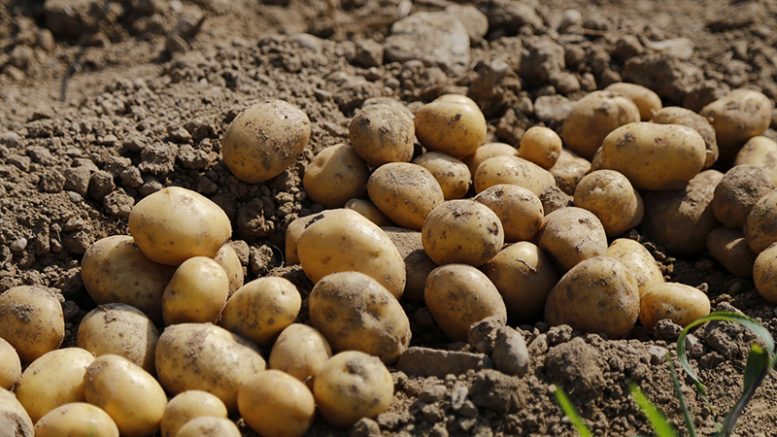By Dale Lathim
In the May/June issue of Potato Country, I discussed the historic spring weather that we had in the Columbia Basin and the subsequent late start to the planting season. As is the case in most years in the Basin, Mother Nature has given us great weather to put us nearly back on track. As I write this column, the crop appears to be only five to six days behind normal, and with the contingencies that the processors built into their run schedules in case we did not catch up, it looks like the crop should be ready when they want it in mid-July.
While the new crop is growing nicely and catching up from its late start, there is still a lot of talk about the amount of bruise that we saw in the 2018 storage crop. While many growers have been totally shocked at the low percentage of their potatoes that have been scored as bruise free, many others have seen numbers equal to or higher than their historical average.
After seven months of grower storage deliveries, the weighted average bruise-free score is 8.2 percent from the 2017 crop and a massive 12.4 percent from the five-year historical average. To put that into economic terms, the weighted average bruise-free incentive across the processors we deliver to is 73 cents per ton. Our members deliver more than 1 million tons of grower storage potatoes, so that 12.4 percent reduction has cost them $9,052,000.
As I mentioned before, not all growers had dips from their historical average, so that reduction has fallen on the hands of only about 12 to 13 growers. Of course, those growers are screaming for major changes to the bruise-free language in our contracts. I can completely understand where they are coming from and can sympathize with the financial hit they have incurred this year. However, it becomes very hard to address this issue in the contracts when we cannot definitively determine what led to the reduced numbers.
All growers pretty much have a standard system that they use to harvest and handle the potatoes. Most growers have not changed the equipment that they use nor the operators who run the equipment. If all things are the same as usual, why was 2018 different? The two most common assumptions being made were that the potatoes were being graded differently or the definition of a bruise had somehow changed over the years.
I believe that the intense scrutiny that we have put the grading services through has mostly laid to rest the assumption that errors were being made in the grading of the potatoes. After all, if the grading was being done differently or incorrectly, all of the growers – not just some – would be seeing lower percentages this year.
The idea that the definition of a bruise has changed was an easy one to address. The definition in the contracts has not changed in nearly 20 years. The definition that has been used by USDA graders and adopted by Ag World has also not changed in even more years.
So the answer has to come back to an environmental cause. Speculations include the stress the plants were under due to the heat and smoke that we experienced in the latter part of the growing season. But again, why did it not affect everyone? Others speculate that it has to do with the moisture level of the soil and subsequently the tubers at harvest time. No one has any definitive data on this, but the growers who had some very good results and some very bad results say that the fields that were the wettest had the highest bruise-free numbers, and their low numbers were on their dry fields.
While no one can pinpoint the exact cause of the bruise situation from last year, the one thing I do know is that the high level of talk and concern over this issue has reinforced the idea that we need to make some tweaks to the contracts. Are the processors going to allow more bruises going forward? Not a chance.
But we do have an opportunity to lessen the financial impact of some of the lighter bruises and take into account the size of the potato so that a tiny bruise on a 20-ounce potato doesn’t cost the grower four times the amount of money as a big bruise on a 5-ounce potato.
With emotions running as high as they are on this topic, you can be assured that this will be one of our top priorities when we get the chance to sit down with the processors to negotiate our 2020 potato contracts.

